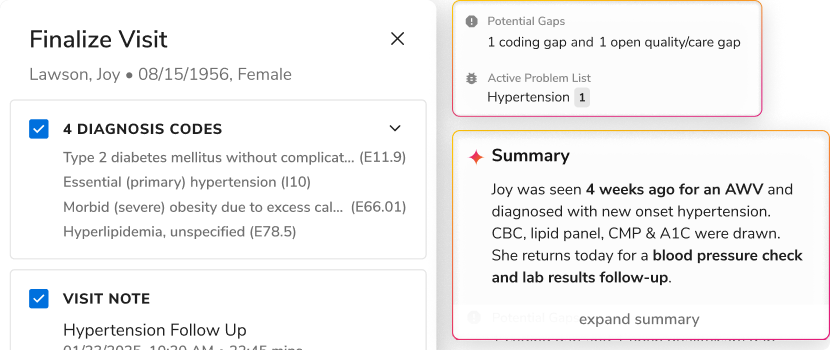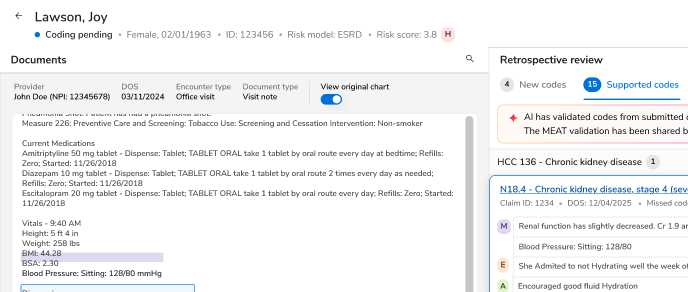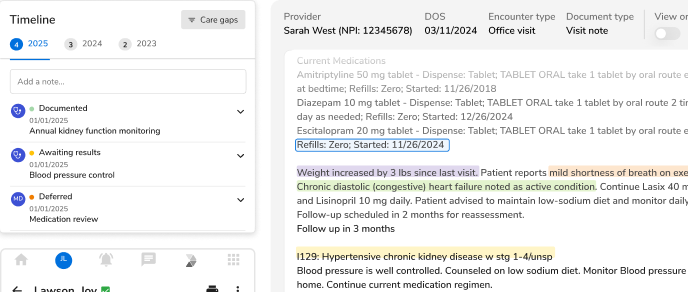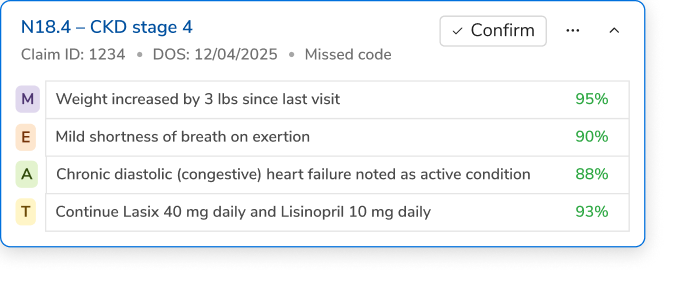How Can AI Be A Catalyst In Solving Physician Burnout?

.png)
As mental health continues to take center stage in the growing health crisis, burnout often slips through the cracks. The World Health Organization recognizes burnout as an Occupational Phenomenon, highlighting its significance as a critical issue impacting well-being. Healthcare as an industry has witnessed some of the deepest repercussions of burnout.
Physician burnout has reached alarming levels, with athenahealth’s Physician Sentiment Survey showing that up to 93% of physicians report feeling burned out on a regular basis. The problem has been exacerbated since the pandemic, leading to concerns about the sustainability of our healthcare system and the well-being of those who power it. However, artificial intelligence (AI) is emerging as a promising solution to help address this growing crisis.
Understanding The Problem
Taking a closer look at how a doctor’s workday pans out, they have to be on their toes because of the level of sensitivity their job entails. When a patient comes to visit a doctor, they bring in not just the disease to be diagnosed, but dozens of paperwork to be managed to close the whole process. If we throw in a never-ending cycle of paperwork and administrative tasks in front of them, each being very important to aid the healthcare journey of the patient but a lot to be put just on the doctor’s plate, their margin of error might increase substantially.

These documentation and administrative systems actually provide the building blocks to the hospital systems. But adding this pressure of managing mounting documentation requirements to the modern expectation of 24/7 availability and instant responses to this, doctors tend to stretch themselves thinner than ever. And let’s not talk about the persistent staff shortages, because that will just add more fuel to the fire.
The Great AI Intervention in Healthcare
Artificial intelligence is offering us several key pathways to reduce administrative burden and restore the human element to healthcare:
1. Automated Documentation and Clinical Notes

The paramount objective of a doctor whenever they meet patients is to ensure that the patient is feeling acknowledged and their concerns are properly heard. Doctors wouldn't want to miss out on any crucial information, nor would they want to stop the patient in between their conversations to document important points from it. Yet, how can they manage it all? Enter AI-powered digital scribes.
These systems are well equipped to transcribe the doctor-patient conversations, comprehending each aspect of it in a way to make structured notes and analysis in real time, which can be leveraged to assess the patient’s situation. The only thing to consider is getting every information captured approved by the doctor before submitting to the system so that small tweaks can be done if the system has made some slips anywhere.
2. Streamlined Administrative Tasks
Administrative tasks in healthcare extend beyond filling out forms. They span from appointment booking till documentation and bill processing. The best part about considering AI involvement in such tasks is that they have relative feasibility and lower risk as compared to clinical decision making, which makes it easier for the doctors to oversee without any thorough reviewing.

Once the privacy measures are in place, these smart systems can actually be trusted with various tasks – self-serve functions such as appointment scheduling by the patient, insurance claims and follow-up coordination from the hospital’s end with unprecedented precision.
3. Enhanced Clinical Decision Support
If we move towards high-risk scenarios related to AI systems, the foremost challenge involves clinical decision making. Doctors need more time on their hands and minimal pressure as possible to function efficiently and make the best decisions for their patients. Any information or analysis that can be provided to the doctors to assess the patient’s situation in a better way or make the right diagnosis, is highly valued.

Modern AI systems are now equipped with sophisticated capabilities to identify patterns and potential issues from recorded patient data. These systems can detect potential risks and flag high-risk scenarios, highlighting patients who may need immediate or future additional attention. But can we trust the AI systems with actual clinical decision support? The objective is to enhance human judgment, not replace it. Considering the impact of a margin of error in such a case and conducting a thorough review by the physicians, it is worth exploring the possibility.
4. Intelligent Inbox Management
Inbox management can consume significant time without proper structure. The messages can be as basic as appointment confirmations to an urgent lab request for a patient in line for surgery. The AI tools are enabled with a mechanism of segregating messages according to priority, departments, and other factors and crafting personalized responses based on every query or request. However, a prominent point of consideration here should be that the systems should know the difference between the communication styles of, for example, a pediatrician versus a radiologist, and the system needs to be smart enough to handle these unique needs. Doctors and nurses still get to review everything before it goes out, so patient care stays top priority.

Real-World Impact
As technology continues to evolve, we can expect more advancements in the AI systems and their capabilities to support clinical care. 87% of healthcare leaders have reported a positive experience with AI. This shows that the forward thinking healthcare organizations aren't just considering, they're already adopting AI and seeing some incredible results. The objective is to never replace the human touch, but to enhance it for a better doctor-patient relationship. Those who decide to implement thoughtful AI solutions will gain significant advantages in provider satisfaction, operational efficiency, and ultimately, patient care quality.

.png)





.png)









.svg)
.svg)

.svg)

